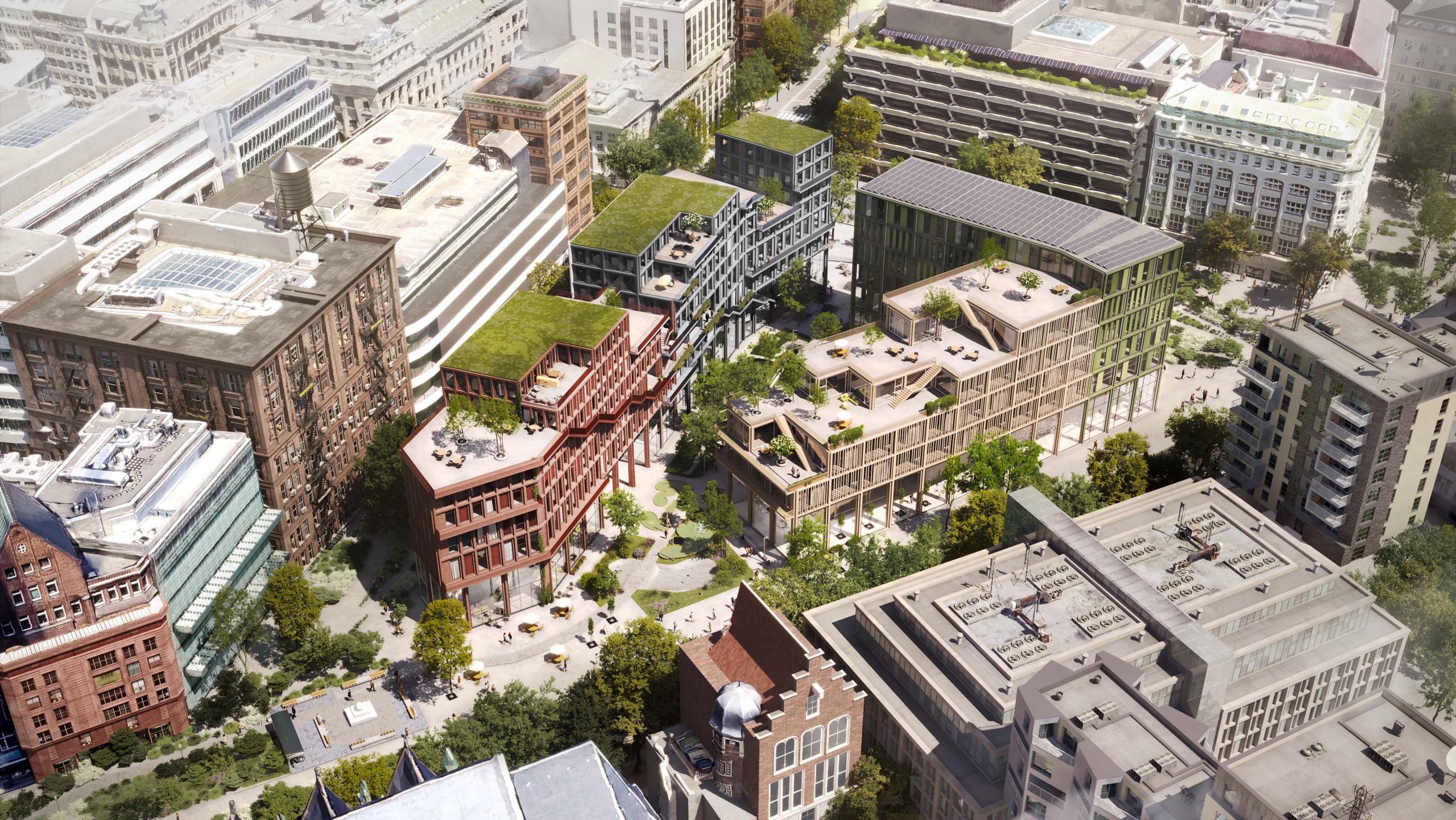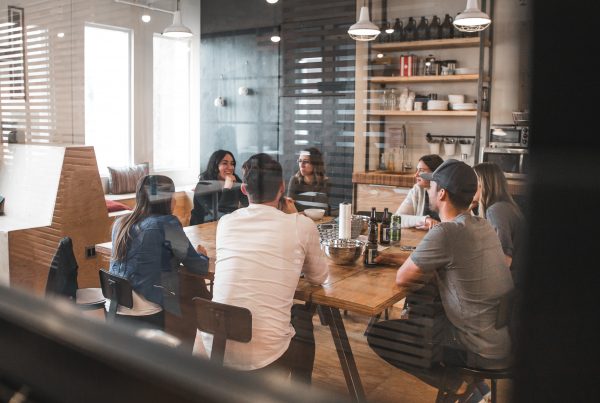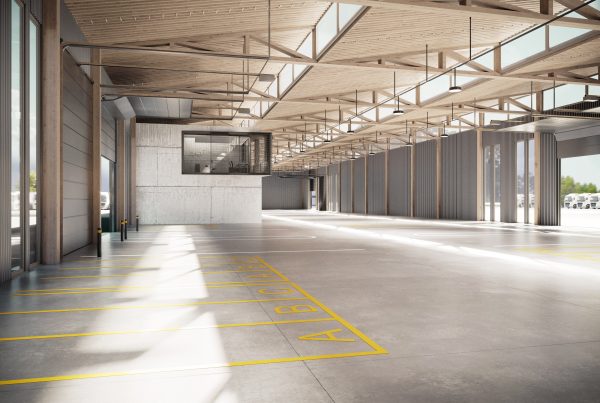Old department store transformed into an urban oasis of well-being by Asselmeyer Architects
Contemporary example for the conversion and revitalization of vacant large buildings
Hamburg (pts002/08.12.2023/08:40) Conversion and revitalization of vacant large buildings – The large-scale project is an example of how existing and long outdated building typologies can be sensibly converted and revitalized. “By dividing and segmenting the oversized structure of this department store, which has been vacant for years, we are creating a high-quality space in the middle of the urban cityscape. In this way, we enable the neighborhood to find and reinvent itself. We want to bring life back into this now open and light-flooded building. The project shows how architecture can make a positive contribution to urban development, social cohesion and the identity of an entire urban area,” emphasizes Dipl. Ing. Architect Justus Asselmeyer, whose team is planning and supervising the study.
The architectural normative in Germany: demolition and oversized new construction
“The reality in the German construction industry has long been that we either simply tear down individual buildings or even entire complexes and then build new 08/15 neighborhoods there, or we continue to use the sometimes completely oversized and out-of-scale building sins of the 1970s almost unchanged in their substance. Quite clearly, we believe that this is the only way to save the now often discussed ‘gray energy’. A fatal mistake, because when it comes to the question of subsequent use, there is often only the option of radical demolition or more or less 1:1 reuse of the existing building – albeit more bad than good. There is little or no in-between. This is not how modern architecture should operate,” emphasizes architect Asselmeyer.
The alternative to the brutal wrecking ball: creating minimally invasive identity architecture
The problem is that the central zones of these buildings, or rather colossi, are highly unattractive. No daylight. Flat ceilings. Deep rooms. You wouldn’t want to live or work here. We have to start creating meaningful and individual solutions for all existing building typologies and these are – in most cases – not only to be answered with either or, but with an empathetic approach to the building, its surroundings and analysis of the identity for the residents and users.
The solution in this study: over 50 percent of the original building’s structure is still in use, 50 percent of the building will be demolished and a high-quality outdoor and intermediate space will be created instead. Real places for real life!
Asselmeyer approach to modern architecture: radical rethinking
For this reason, the complete demolition of such mega-building structures is out of the question, but the subsequent use must be radically and boldly rethought and planned. “I therefore call for more courage on the part of architects and clients. Genuine sustainability cannot be created through despondent designs. Only by dividing and segmenting the oversized structure do we create open spaces, especially in the middle of the building. This results in a further advantage: 100 percent new façade surfaces that are created in the inner courtyard,” says the expert. “We are bringing the neighborhood back to a human scale, we are getting an inner courtyard that can be an open space, recreation area and quality of stay for residents as well as passers-by. An inner courtyard, flooded with light, with many entrances, but at the same time decelerating – protected from the noise and traffic of the city center. That is my vision of identity architecture!”
Former architectural desert in the city center will soon become an urban oasis of well-being
Specifically, the new design by Asselmeyer Architekt gives the mega-complex a clearer structure through the color scheme and different materials of the façades, giving the building an inviting and human appearance. The façades are designed to be energy-efficient and sustainable and offer many opportunities for personal development for different users. “There are offices, meeting areas, student spaces, art workshops, exhibition and event spaces, shopping facilities, sports facilities, apartments on the upper floors and a food court throughout the complex. The highlight is the rooftop on the roof of the building. It offers a breathtaking view over Hamburg and two different bars invite you to linger,” says Asselmeyer.
Large and impersonal becomes segmented, light-flooded and human
“For me, this project in the middle of the city is an example of how existing and seemingly hopelessly outdated building typologies can be sensibly adapted, repurposed and revitalized. By dividing and segmenting the oversized structure of the former giant department store, a high-quality urban space was created that brings the quarter back to a human scale. In this way, the project also shows how modern and people-oriented architecture can make a positive contribution to urban development and social cohesion,” says architect Asselmeyer.
Info about the concept of identity architecture for office and commerce at: https://asselmeyerarchitekt.de/
Link to press release: https://www.pressetext.com
ASSELMEYER ARCHITEKT Hamburg
Lange Reihe 29
20099 Hamburg
+49 (0) 40 524 764 040
info@asselmeyerarchitekt.de





